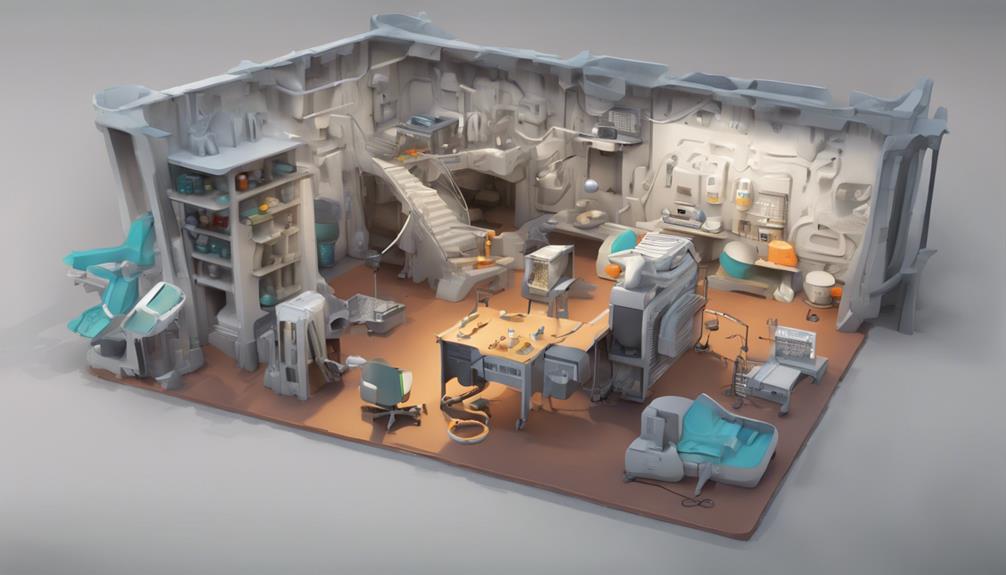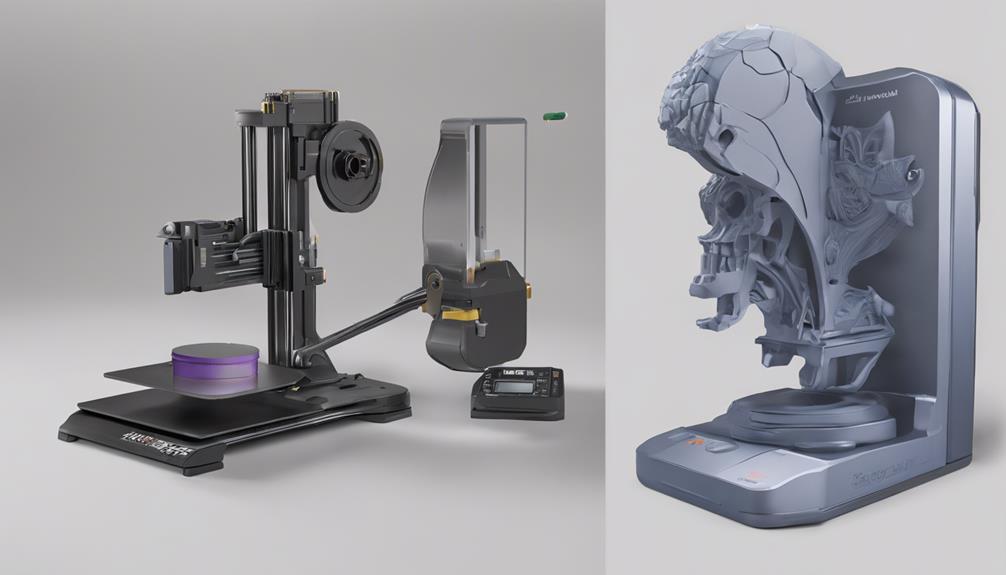Solid Edge has established itself as a formidable player in the domain of 3D printing software, catering specifically to professionals within the additive manufacturing sector. With its robust suite of features finely tuned for both mechanical and electronic design intricacies, Solid Edge is known for its ability to produce precise and high-quality parts essential for engineering applications. Despite potential challenges associated with learning curves and initial complexity, the software's innovative Generative Design aspect and the efficiency of Synchronous Technology offer users a glimpse into a world of optimized design processes. As we explore further into the domain of 3D printing software solutions, Solid Edge's unique offerings continue to intrigue and hold promise for those seeking unparalleled results in the field.
Learning Curve and Usability

When delving into the domain of Learning Curve and Usability in Solid Edge, it becomes evident that the software's robust nature necessitates a significant investment of time to master its plethora of features. Solid Edge, with its extensive capabilities, may initially overwhelm inexperienced users.
Those with prior experience in similar tools might find the learning process smoother. However, beginners accustomed to more user-friendly interfaces may initially prefer SolidWorks. To effectively utilize Solid Edge's potential, formal training is recommended.
Despite the initial challenges, investing time in mastering Solid Edge can lead to proficiency in utilizing its powerful features for designing intricate mechanical and electronic components.
Solid Edge in 3D Printing
Solid Edge brings advanced capabilities to the world of 3D printing, catering specifically to experts in additive manufacturing for precise part creation and topology optimization. While not the most popular software due to costs and complexity, Solid Edge is favored by professionals seeking high-quality results.
It offers Generative Design for efficient topology optimization, along with tools to visualize supports and troubleshoot printing issues. With a focus on mechanical applications, Solid Edge excels in producing accurate parts for engineering purposes.
Its robust features make it a valuable asset for those looking to achieve intricate designs and optimize their 3D printing workflow with precision and expertise.
Design Capabilities Overview

With a focus on intricate modeling tasks requiring dimensional accuracy, Solid Edge offers a range of design capabilities tailored for mechanical and electronic designs. The software is ideal for precise part creation and is equipped with Generative Design features for efficient material utilization. One of its key strengths lies in the use of Synchronous Technology, blending direct and parametric modeling to provide flexibility in design processes. However, due to its precision-focused nature, Solid Edge may not be the best choice for modeling organic shapes. Below is a table outlining some key design capabilities of Solid Edge:
| Design Capabilities | Description |
|---|---|
| Precise Part Creation | Ideal for detailed mechanical and electronic designs |
| Generative Design | Enhances material optimization through AI algorithms |
| Synchronous Technology | Offers flexibility by combining direct and parametric modeling |
Learning Resources Available
For individuals seeking to enhance their proficiency in Solid Edge, a wide range of learning resources is readily accessible. Whether you are a beginner or an expert looking to explore further into the software, these resources can aid in your journey:
- Siemens offers over 68 hours of free educational videos.
- Certification available through an online exam.
- Online forum for user support and guidance.
These resources provide a structured approach to learning Solid Edge, ensuring that users can maximize the software's potential and stay updated with the latest features and tools.
Comparison With Alternative Software

In the domain of professional modeling tools, an insightful comparison between Solid Edge and its alternatives sheds light on their distinctive features and suitability for various user groups. When considering Solid Edge versus SolidWorks, both require subscription fees for full access. SolidWorks boasts a larger online community, a simpler user interface, and customization options, making it a popular choice. On the other hand, Solid Edge is powerful for mechanical design experts but may be costly for makers and hobbyists. For 3D printing enthusiasts, SolidWorks and Fusion360 could be more suitable options. Below is a comparison table:
| Criteria | Solid Edge | SolidWorks |
|---|---|---|
| User Community | Smaller community | Larger online community |
| User Interface | Robust with many features | Simpler interface, customization options |
| Suitability for Users | Mechanical design experts | Makers and hobbyists |
| Cost | Expensive | Subscription fees required |
Frequently Asked Questions
Can Solid Edge Be Used for Artistic or Organic 3D Modeling?
While Solid Edge excels in precise part creation for mechanical purposes, it may not be the best choice for artistic or organic 3D modeling due to its focus on dimensional accuracy. Users seeking such capabilities might find other tools more suitable.
Is There a Trial Version of Solid Edge Available for Testing?
Yes, Siemens offers a trial version of Solid Edge for testing purposes. This trial version allows users to explore the software's features and capabilities before committing to a full subscription, enabling a hands-on experience to assess its suitability for their needs.
Does Solid Edge Support Collaboration Features for Team Projects?
Solid Edge offers collaborative features for team projects, enabling multiple users to work on designs concurrently. These features guarantee seamless communication, version control, and real-time updates, enhancing productivity and coordination within design teams.
Are There Any Specific Hardware Requirements for Running Solid Edge?
To guarantee peak performance when running Solid Edge, it is advisable to meet recommended hardware requirements. These typically include a multi-core processor, sufficient RAM, a dedicated graphics card, and ample storage space. Adequate hardware facilitates smooth operation and enhances user experience.
Can Solid Edge Models Be Easily Exported to Other 3D Printing Software?
Exporting Solid Edge models to other 3D printing software can be straightforward. Utilize common file formats like STL or STEP for compatibility. Properly preparing the model, ensuring correct units and scaling, will facilitate a smooth changeover for seamless printing on alternative platforms.
Conclusion
In the world of additive manufacturing, Solid Edge stands as a beacon of precision and efficiency. Like a master craftsman wielding a fine tool, Solid Edge empowers professionals to create intricate and flawless 3D printed parts.
Its advanced features and capabilities shine brightly, guiding users through the intricate process of design. Solid Edge is the key to opening the door to a world of limitless possibilities in the domain of 3D printing.